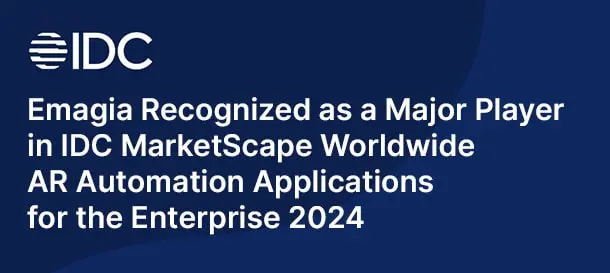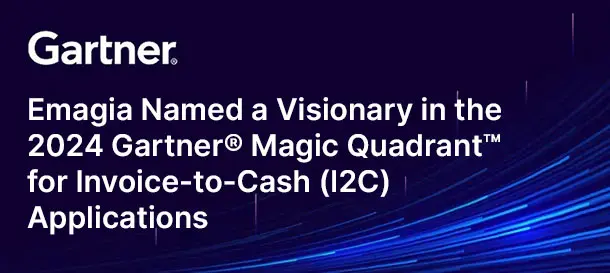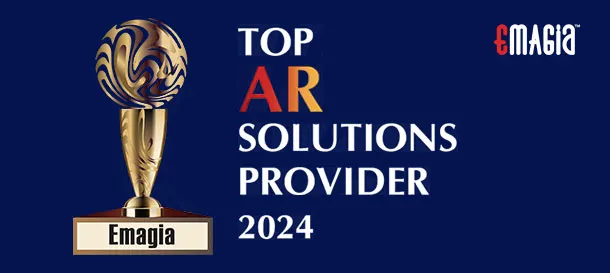In the intricate world of business finance, Accounts Receivable (AR) represents the lifeblood of cash flow – the money owed to your business by customers for goods or services already delivered. While generating sales is undeniably crucial, the true measure of financial health lies in how efficiently those sales are converted into actual, usable cash. This conversion process hinges significantly on effective communication with your customers about their outstanding balances.
Traditionally, managing AR communications, such as sending out customer statements and dunning letters, has been a manual, labor-intensive, and often inconsistent endeavor. Finance teams spend countless hours pulling data, formatting documents, printing, stuffing envelopes, and mailing these communications. This manual burden not only consumes valuable time and resources but also introduces a high risk of errors, delays, and inconsistent messaging, ultimately hindering cash flow and potentially straining customer relationships.
However, the digital revolution has brought forth a transformative solution: statement/letter automation in AR. This specialized technology is designed to intelligentize and streamline the entire process of communicating with customers about their outstanding invoices. This comprehensive guide will delve deep into the critical role of this essential automation. We will unravel what AR communication automation entails, explore the compelling benefits it offers, and meticulously dissect the essential features that define top-tier solutions. Join us as we uncover how leveraging modern automation for AR statements and letters is not just about reducing costs, but about unlocking unprecedented efficiency, accelerating cash flow, and enhancing the overall customer experience for sustainable business growth.
Understanding Statement/Letter Automation in AR: The Digital Evolution of Collections
To truly appreciate the transformative impact of this technology, it’s essential to define what statement/letter automation in AR means, understand its core purpose, and trace its evolution within the broader landscape of Accounts Receivable management.
What is Statement/Letter Automation in AR? Defining the Solution.
What is statement/letter automation in AR? At its core, this refers to the use of specialized software to automatically generate, personalize, and distribute various types of customer communications related to Accounts Receivable. This includes, but is not limited to, monthly customer statements, payment reminders, dunning letters, and dispute acknowledgments. The goal is to replace manual, repetitive tasks with efficient, automated workflows that ensure timely, accurate, and consistent communication with debtors.
This automation goes beyond simple mail merge; it involves intelligent systems that can pull real-time data from your ERP or accounting system, apply predefined rules for communication triggers (e.g., invoice aging, balance thresholds), and deliver personalized messages through multiple channels. It transforms a labor-intensive administrative function into a streamlined, strategic component of your collections process, directly impacting cash flow velocity.
The Critical Role of Communications in AR Management.
Effective communication is the cornerstone of successful Accounts Receivable management. Timely and accurate statements and letters serve several vital purposes in prompting payments and managing customer relationships.
- Clarity on Outstanding Balances: Customer statements provide a clear, consolidated view of all outstanding invoices, credits, and payments. This helps customers understand their total outstanding balance and avoids confusion.
- Payment Reminders: Dunning letters and payment reminders serve as crucial nudges, prompting customers to pay their overdue invoices. Consistent reminders reduce the likelihood of payments being overlooked.
- Dispute Identification: Clear statements can help customers identify discrepancies or disputes early on, allowing for quicker resolution before the invoice becomes severely overdue.
- Legal Compliance: For certain types of collections or industries, specific communication requirements and timelines must be met, which automation can help enforce.
- Maintaining Relationships: Professional, consistent, and personalized communications can help maintain positive customer relationships, even during the collections process, by providing transparency and clarity.
Without effective communication, even the best products or services can lead to delayed payments and strained cash flow.
Evolution from Manual to Automated AR Communications.
The journey of AR communications has evolved significantly, driven by the need for greater efficiency and accuracy.
- Manual Era: Historically, AR teams would manually generate statements and letters using spreadsheets or basic accounting software, then print, fold, stuff envelopes, and mail them. This was a highly labor-intensive and slow process.
- Early Automation (Batch Processing): The first steps towards automation involved batch processing, where systems could generate a large number of standardized statements or letters, but personalization was limited, and delivery was still often manual.
- Digital Delivery (Email): The advent of email allowed for faster, cheaper delivery of statements and reminders, reducing postage costs and physical mail delays. However, personalization and intelligent triggering often remained limited.
- Intelligent Automation (AI/ML): Today, advanced AR automation platforms leverage Artificial Intelligence (AI) and Machine Learning (ML) to intelligentize the entire communication process. This includes dynamic personalization, smart segmentation, predictive analytics for optimal timing, and multi-channel delivery, transforming AR communications into a strategic tool for cash acceleration.
This evolution underscores the continuous drive to transform AR from a reactive, administrative function into a proactive, data-driven engine for cash flow.
The Challenges of Manual AR Statement and Letter Processes
Before the advent of advanced automation, manual AR statement and letter processes presented significant challenges that directly impacted a business’s efficiency, cash flow, and customer relationships.
Time-Consuming and Labor-Intensive.
One of the most immediate and pervasive challenges of manual AR communications is the sheer amount of time and human effort they consume.
- Data Extraction and Formatting: AR teams spend hours manually extracting invoice data, customer details, and payment histories from various systems, then formatting it into statements or letters.
- Physical Processing: The physical tasks of printing, folding, stuffing envelopes, applying postage, and making trips to the post office are incredibly time-consuming and repetitive, diverting valuable staff from more strategic tasks.
- Manual Tracking: Tracking which statements or letters were sent, when, and to whom, often relies on manual logs or spreadsheets, which are prone to error and difficult to maintain.
This administrative burden significantly slows down the collections process and reduces AR team productivity.
High Risk of Errors and Inconsistencies.
Manual processes are inherently susceptible to human error, leading to inaccuracies and inconsistencies that can undermine the effectiveness of AR communications and damage customer trust.
- Typographical Errors: Manual data entry or merging can lead to simple typos in amounts, invoice numbers, or customer details.
- Incorrect Balances: If data is not updated in real-time or if reconciliation is delayed, statements might show incorrect outstanding balances.
- Inconsistent Messaging: Different collectors or different periods might use slightly varied templates or tones, leading to a lack of uniformity in dunning messages. This can confuse customers or dilute the urgency.
- Missed Communications: Human oversight can lead to missed reminders or dunning letters, delaying payment cycles unnecessarily.
Errors and inconsistencies not only delay payments but can also frustrate customers and lead to disputes.
Delayed Delivery and Impaired Cash Flow.
The manual nature of AR communications directly contributes to delays in payment collection, negatively impacting a business’s cash flow.
- Mail Delays: Relying on physical mail introduces inherent delays due to postal service delivery times.
- Internal Bottlenecks: The time-consuming manual process itself creates internal bottlenecks, meaning statements and letters are often not sent out as promptly as they should be.
- Direct Impact on DSO: Delayed communication directly translates to delayed payments, increasing Days Sales Outstanding (DSO) and tying up cash in uncollected receivables for longer periods.
These delays can significantly strain a company’s liquidity and working capital.
Lack of Personalization and Customer Experience Issues.
Traditional manual processes often struggle to provide the level of personalization and consistency needed for a positive customer experience during collections.
- Generic Templates: Manual systems often rely on generic, one-size-fits-all templates that fail to acknowledge individual customer history, payment behavior, or specific reasons for non-payment. This can make customers feel unvalued or unfairly treated.
- Inconsistent Tone: The tone of communications can vary significantly between different AR team members, potentially leading to some customers receiving overly aggressive messages while others receive overly lenient ones.
- Frustration and Churn: Inaccurate or delayed statements, coupled with inconsistent or impersonal dunning, can frustrate customers, damage relationships, and even lead to customer churn.
Poor communication can undermine the very relationships that drive future revenue.
High Operational Costs.
The inefficiencies and manual burdens of traditional AR communication processes translate directly into significant operational costs.
- Direct Costs: Businesses incur substantial expenses related to printing (paper, ink, printer maintenance), postage, and stationery for each communication sent.
- Labor Costs: The extensive human effort required for generating, processing, and tracking communications represents a significant labor cost for the AR department.
- Hidden Costs: Costs associated with correcting errors, re-sending communications, investigating disputes caused by unclear statements, and the opportunity cost of AR staff not focusing on higher-value tasks.
These escalating costs highlight the financial drain of outdated AR communication methods.
Essential Statement/Letter Automation Software Features: What Defines Top Solutions
When selecting software for AR communication automation, businesses should prioritize features that deliver maximum impact on efficiency, accuracy, and cash flow. These statement/letter automation software features define top-tier solutions.
1. Automated Generation and Scheduling.
The foundational feature of any effective AR communication automation tool is its ability to automatically generate and schedule communications based on predefined rules.
- Rule-Based Triggers: The system should automatically trigger the creation of statements or letters based on criteria like invoice aging (e.g., 7 days past due, 30 days past due), outstanding balance thresholds, customer segments, or specific events (e.g., payment received, dispute logged).
- Flexible Scheduling: Ability to schedule communications for daily, weekly, monthly, or custom intervals, ensuring consistent and timely outreach without manual intervention.
- Batch Processing: Efficiently generate and process large volumes of communications in batches, even for thousands of customers.
This feature eliminates manual effort and ensures communications are sent out punctually.
2. Dynamic Personalization and Customization.
Beyond simple automation, top-tier solutions offer dynamic personalization to make communications more effective and customer-centric.
- Data-Driven Content: Automatically pull specific customer data (name, outstanding balance, individual invoice details, payment terms, contact person) into the communication template.
- Customizable Templates: Provide a library of customizable templates for various communication types (statements, reminders, dunning letters, dispute acknowledgments) that can be branded with your company’s logo and messaging.
- Variable Content Blocks: Ability to include dynamic content blocks based on specific conditions (e.g., a special message for high-value customers, different payment instructions for international clients).
- Attachment Management: Automatically attach relevant documents, such as copies of original invoices or credit memos, to the communication.
Personalization enhances relevance and improves customer engagement, leading to faster payments.
3. Multi-Channel Delivery.
Modern businesses need to reach customers through their preferred channels. Effective AR communication automation supports multiple delivery methods.
- Email Integration: Seamlessly send communications via email, including personalized subject lines and sender addresses.
- SMS Messaging: Ability to send short, timely reminders via SMS for quick alerts.
- Customer Self-Service Portal Integration: Automatically post statements and letters to a secure online customer portal, allowing customers 24/7 access to their account information and payment options.
- Print-Ready Output: For customers who still prefer physical mail, the software should generate print-ready files that can be sent to a print vendor or printed in-house.
Multi-channel delivery ensures messages reach customers effectively and efficiently.
4. Intelligent Segmentation and Workflow.
To optimize collection strategies, the software should allow for intelligent customer segmentation and dynamic workflow management.
- Customer Segmentation: Segment customers based on various criteria such as risk profile, payment history, outstanding balance, strategic importance, or industry.
- Tailored Communication Strategies: Apply different communication strategies (e.g., more frequent reminders for high-risk customers, softer tone for strategic accounts) based on customer segments.
- Automated Escalation Workflows: Define automated escalation paths, moving from gentle reminders to more firm dunning letters and ultimately to collector intervention, based on predefined aging thresholds and payment behavior.
- Task Assignment: Automatically create and assign tasks to collectors based on the communication workflow (e.g., “call customer X after 3rd dunning letter”).
Intelligent segmentation ensures that collection efforts are targeted and effective.
5. Real-time Tracking and Audit Trails.
Visibility and accountability are crucial for effective AR management and compliance. Top solutions provide robust tracking and audit capabilities.
- Delivery Tracking: Monitor the status of sent communications (e.g., email sent, opened, clicked; SMS delivered).
- Centralized Communication History: Maintain a complete, centralized record of all communications sent to each customer, including content, date, time, and channel.
- Comprehensive Audit Trails: Log every action taken within the system, providing a clear, immutable audit trail for compliance purposes and internal review.
- Performance Analytics: Track key metrics related to communication effectiveness, such as open rates, click-through rates, and the impact of specific communication sequences on payment speed.
These features provide transparency and accountability, crucial for optimizing collection strategies.
6. Seamless Integration with Core AR/ERP Systems.
For AR communication automation to be truly effective, it must integrate seamlessly with a company’s existing financial and operational ecosystem.
- Bidirectional Data Flow: The software should have robust, bidirectional connectors or APIs to integrate with core ERP systems (e.g., SAP, Oracle, NetSuite, Microsoft Dynamics 365) and accounting software. This ensures real-time access to accurate invoice data, payment statuses, and customer master data.
- Eliminate Manual Data Transfer: Integration eliminates the need for manual data extraction and input, reducing errors and saving significant time.
- Consistency Across Systems: Ensures that communications sent to customers are always based on the most current and accurate financial records, avoiding discrepancies.
Seamless integration is the backbone of efficient and accurate automated AR communications.
The Transformative Benefits of AR Communication Automation
Implementing statement/letter automation in AR delivers a wide array of significant benefits that directly impact a company’s financial health, operational efficiency, and customer relationships.
Accelerated Cash Flow and Reduced DSO.
The most direct and impactful benefit is the acceleration of cash flow and a reduction in Days Sales Outstanding (DSO).
- Timely Reminders: Automated, consistent reminders ensure customers are prompted to pay on time or shortly after an invoice becomes due, preventing payments from aging unnecessarily.
- Proactive Collections: Intelligent automation facilitates a proactive approach to collections, addressing potential delays before they become significant problems.
- Reduced Manual Delays: Eliminating manual processes means communications are sent out faster, leading to quicker responses and payments from customers.
Faster, more effective communication directly translates to cash moving into the bank sooner.
Increased Efficiency and Productivity.
Automating repetitive communication tasks frees up valuable human resources within the AR department.
- Reduced Administrative Burden: AR staff no longer spend hours on manual data entry, printing, stuffing, and mailing.
- Focus on High-Value Tasks: Freed from mundane activities, AR professionals can dedicate more time to complex tasks like resolving difficult disputes, negotiating payment plans, or analyzing payment trends for strategic insights.
- Scalability: The automated system can handle increasing transaction volumes without requiring a proportional increase in headcount, allowing businesses to scale efficiently.
This boosts overall AR department productivity and operational efficiency.
Improved Accuracy and Compliance.
Automation significantly enhances the reliability and trustworthiness of AR communications and financial records.
- Eliminate Human Error: Automated data pulls and template population drastically reduce the risk of typos, incorrect balances, or missed communications.
- Consistent Messaging: Ensures all communications adhere to predefined policies and brand guidelines, maintaining a professional and consistent tone.
- Robust Audit Trails: Detailed, digital logs of every communication provide a clear audit trail, simplifying internal and external audits and demonstrating compliance with regulatory requirements.
Higher accuracy leads to cleaner books and reduced compliance risk.
Enhanced Customer Experience and Relationships.
Contrary to popular belief, automation can actually improve customer relationships in collections.
- Clarity and Transparency: Customers receive accurate, clear statements and reminders, reducing confusion and disputes.
- Professionalism: Consistent and professional communications reinforce a positive brand image.
- Personalization: Tailored messages show customers that their specific account details are understood, fostering a sense of respect.
- Reduced Frustration: Fewer errors and delays mean less frustration for customers, leading to smoother interactions.
A positive communication experience can help preserve valuable customer relationships even during the collections process.
Significant Cost Savings.
The financial benefits of automation extend to direct cost reductions within the AR department.
- Reduced Printing and Postage Costs: Transitioning to digital delivery (email, portal) significantly cuts down on paper, ink, and postage expenses.
- Lower Labor Costs: The reduced need for manual administrative tasks can lead to optimized staffing levels or reallocation of resources to higher-value functions.
- Minimized Error-Related Costs: Fewer errors mean less time and resources spent on investigations, corrections, and re-sending communications.
These savings contribute directly to the profitability of the finance function.
How Emagia Helps: Revolutionizing AR Communications for Financial Velocity
In the complex world of Accounts Receivable, efficient and intelligent communication is paramount for accelerating cash flow and maintaining strong customer relationships. Emagia’s Autonomous Finance platform is specifically designed to revolutionize statement/letter automation in AR, transforming manual, reactive outreach into a strategic, AI-powered engine for collections excellence. By leveraging cutting-edge Artificial Intelligence (AI) and advanced automation, Emagia ensures that your AR communications are not just sent, but are optimized for maximum impact, driving faster payments and unparalleled financial precision.
Here’s how Emagia’s AI-powered capabilities strategically enhance your AR communication efforts:
- Intelligent Dunning and Communication Workflows: Emagia moves beyond generic, time-based reminders. Our AI analyzes customer payment behavior, risk profiles, and invoice aging to determine the optimal timing, frequency, and content of each communication. This intelligent dunning ensures that the right message reaches the right customer at the most impactful moment, whether it’s a gentle reminder or a firm demand. This dynamic approach significantly accelerates payment recovery compared to static, manual schedules.
- Dynamic Personalization and Content Generation: Emagia’s platform allows for deep personalization of all AR communications. It automatically pulls specific invoice details, outstanding balances, payment terms, and even customer-specific notes directly from your ERP system into customizable templates. This ensures that every statement or letter is highly relevant and professional, fostering clarity and reducing customer confusion. The ability to dynamically generate content based on customer segments or payment history enhances engagement and effectiveness.
- Multi-Channel Delivery Optimization: Emagia supports seamless multi-channel delivery, ensuring your communications reach customers via their preferred method. Whether it’s a personalized email, a concise SMS reminder, or a secure notification on a customer self-service portal, Emagia automates the distribution. For customers preferring physical mail, the system can generate print-ready files. This flexibility maximizes reach and improves the likelihood of prompt payment.
- Real-time Tracking and Communication Effectiveness Analytics: Emagia provides comprehensive, real-time dashboards that track the effectiveness of your AR communications. You can monitor metrics like email open rates, click-through rates, and the direct impact of specific communication sequences on payment speed and DSO. This data-driven insight allows your finance team to continuously refine and optimize your communication strategies, ensuring maximum impact on cash flow.
- Seamless Integration with Core Financial Systems: Emagia integrates natively and bidirectionally with leading ERP systems (SAP, Oracle, Microsoft Dynamics 365, NetSuite) and other financial platforms. This robust integration ensures that all AR communications are based on the most accurate, real-time data, eliminating manual data transfers and ensuring consistency between your communications and your financial records. This foundation is critical for reliable and effective AR automation.
- Freeing Up AR Teams for Strategic Engagement: By automating the tedious, repetitive tasks of generating and sending statements and letters, Emagia frees up your Accounts Receivable team. Instead of spending hours on administrative work, they can focus on high-value activities like resolving complex disputes, building stronger customer relationships, and analyzing payment trends to provide strategic insights to management. This transforms the AR function from a cost center into a strategic contributor to your business’s financial health.
By intelligentizing your AR communications, Emagia empowers businesses to achieve unprecedented levels of efficiency, accuracy, and strategic insight in their collections process. We help you not just send letters, but transform them into powerful tools for accelerating cash flow and fostering stronger, more profitable customer relationships.
Frequently Asked Questions (FAQs) About Statement/Letter Automation in AR
What is statement/letter automation in AR?
Statement/letter automation in AR refers to using specialized software to automatically generate, personalize, and distribute various Accounts Receivable communications, such as customer statements, payment reminders, and dunning letters, to streamline collections and improve efficiency.
How does AR automation improve communication with customers?
AR automation improves communication with customers by ensuring timely, consistent, and personalized messages. It eliminates manual errors, allows for multi-channel delivery (email, SMS, portal), and can tailor content based on customer segments or payment history, leading to clearer, more professional interactions.
What are the benefits of automating dunning letters?
The benefits of automating dunning letters include accelerated cash flow, reduced Days Sales Outstanding (DSO), increased efficiency for AR teams, improved accuracy, consistent messaging, and significant cost savings on printing and postage. It ensures proactive and timely follow-up on overdue invoices.
Can automated AR communications be personalized?
Yes, automated AR communications can be highly personalized. Top-tier software pulls specific customer data (name, invoice details, outstanding balance, payment history) directly from your ERP/accounting system to populate templates, making each message relevant and tailored to the individual customer.
Does AR automation software integrate with existing ERP systems?
Yes, AR automation software typically integrates seamlessly with existing ERP systems (e.g., SAP, Oracle, NetSuite, Microsoft Dynamics 365) and accounting software. This bidirectional integration ensures that communications are based on accurate, real-time financial data and that payment updates flow back into your core systems.
How does automating AR statements impact cash flow?
Automating AR statements impacts cash flow positively by ensuring customers receive clear, accurate, and timely information about their outstanding balances. This clarity and consistency reduce confusion and disputes, prompting faster payments and directly accelerating the conversion of receivables into cash.
What kind of communications can be automated in AR?
A wide range of communications can be automated in AR, including monthly customer statements, pre-due date payment reminders, escalating dunning letters (e.g., 7-day overdue, 30-day overdue), dispute acknowledgments, payment confirmations, and credit limit notifications.
Does automation reduce the need for human interaction in collections?
Automation reduces the need for human interaction for routine, low-value collection tasks. This frees up AR staff to focus on higher-value activities that require human judgment, negotiation, and problem-solving, such as resolving complex disputes, managing high-risk accounts, or building strategic customer relationships.
Conclusion: The Strategic Imperative of Mastering AR Communication Automation
In the relentless pursuit of financial excellence, the ability to communicate effectively and efficiently with customers about their outstanding balances is paramount. As we have explored, statement/letter automation in AR is no longer a mere convenience; it is a strategic imperative that transforms the entire Accounts Receivable function. By leveraging intelligent software, businesses can move beyond the inefficiencies and inaccuracies of manual processes, unlocking unprecedented levels of productivity and precision.
From accelerating cash flow and reducing Days Sales Outstanding (DSO) to enhancing customer relationships and achieving significant cost savings, the benefits of embracing AR communication automation are profound. This technology empowers finance teams to shift their focus from tedious administrative tasks to high-value strategic activities, driving greater financial agility and resilience. For any business striving for optimal cash flow and sustainable growth in today’s dynamic market, mastering the power of automated AR communications is an essential step towards a more intelligent, efficient, and profitable future.




